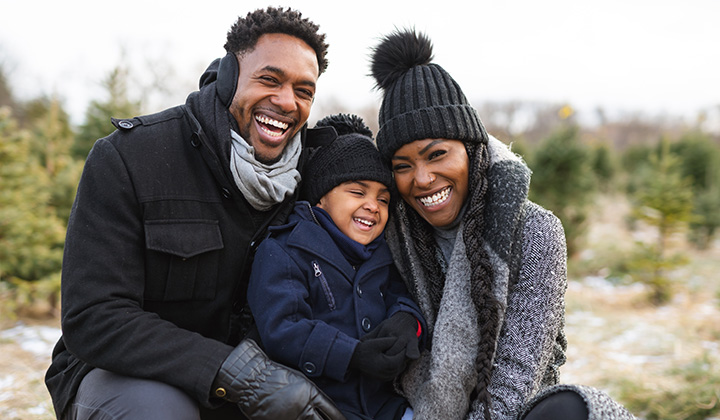
The holidays are generally a time for people to reconnect with family and friends. But this year with respiratory illnesses still making the rounds and the threat of frigid winter weather, there are a lot of considerations for helping keep your family healthy and safe.
Avoiding illness
It is important to remember you can spread illnesses even when you feel healthy. While we have seen some decrease in influenza, respiratory syncytial virus, or RSV, and COVID-19 positivity rates have remained steady.
Viral respiratory symptoms include:
- Fever
- Headache, body aches, chills
- Cough
- Runny nose, congestion
- Sore throat
- Nausea, vomiting, or diarrhea
Tips for staying healthy:
- Get a flu vaccine. Flu vaccine is safe and available for people 6 months and older at your doctor’s office and many places throughout your community
- Wash your hands for at least 20 seconds with soap and water. Wash your hands when coming inside your house from outside, before you eat, after you use the restroom, before touching your face and anytime they are dirty. Keep hand sanitizer with you and use it when you are unable to wash your hands.
- Cover your nose and mouth with a tissue when coughing or sneezing (or sneeze/cough into your elbow).
- Avoid touching your eyes, nose and mouth.
- Continue to wear masks in public areas.
- Stay home if you have symptoms of the flu.
The holidays are all about sharing, but some things you'll want to keep to yourself: forks, spoons and drinking utensils. People can be contagious before they know they're sick, so even just a sip from someone's drink puts their germs in your body.
Weather Woes
As the old song states many people are “dreaming of a white Christmas.” But we know colder weather and snow create some safety concerns. Below are some tips to help keep your family safe whether staying at home or traveling this holiday season.
- Dress warmly in layers – Layers keep the warmth in, so use more layers the colder it is outside. The layers help keep you warm and toasty and then you can peel them off once you start to heat up. Kids are at greater risk for frostnip and frostbite than adults. The best way to avoid this is to make sure to dress warmly and not spend too much time in extreme weather. There's no set amount of time kids should be allowed to stay out in the cold, but they should know when being cold becomes unpleasant, it's time to go inside.
- Walk like a penguin – Walking over ice-covered sidewalks or driveways? Try to avoid it, but to be safe, try to walk in short, little steps in case any part of the path has spots of ice. Teach kids to walk like a penguin by pointing their toes out and take short, little steps. That way, kids can have better footing and are less likely to fall if the ground is icy. And never let children walk on ice over a body of water like lakes, pools or ponds.
- Car seats and coats don’t mix – Remove the jacket in car seats. A kid who still sits in a harness needs those straps to be tight against their body, without the padding of a winter coat. So, strap them in first and then cover their upper and lower body with a blanket or backwards coat. To avoid possible suffocation, make sure the blanket or coat does not cover the child or infant's face.
